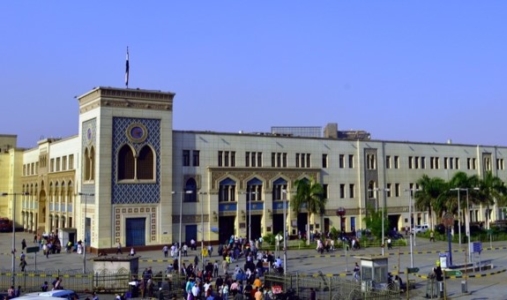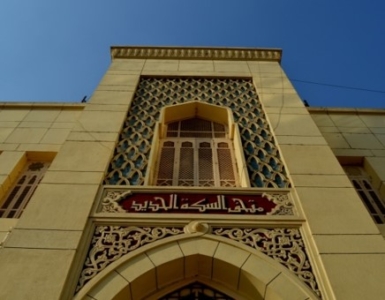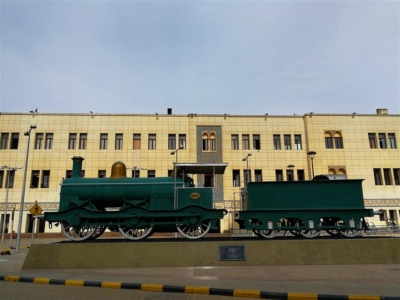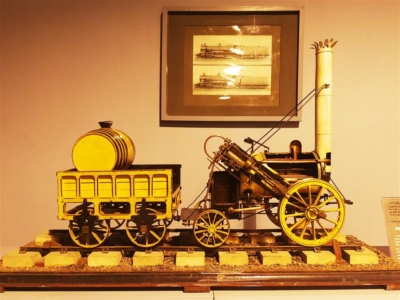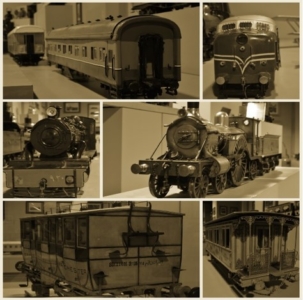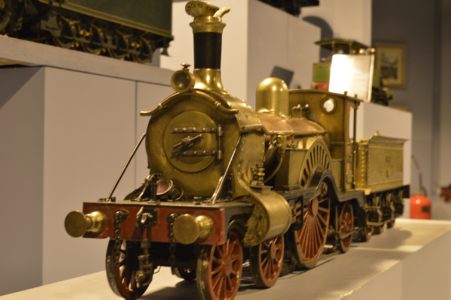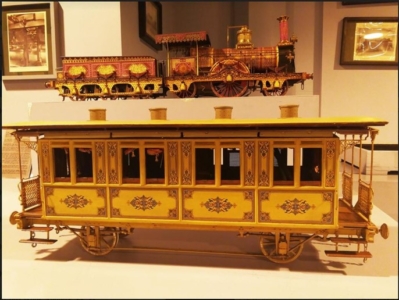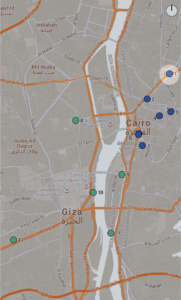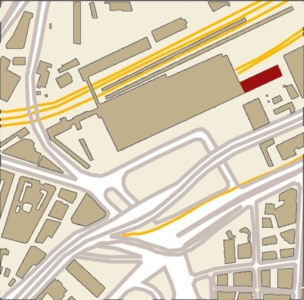متحف السكة الحديد
Photo Gallery
| Address | Ramsis square, Misr Railway Station |
| Opening Hours | 9:00 am to 2:00 pm Closed on Friday |
| Telephone | +20 2 2576 3793 |
| Date of construction | 1934 |
| Architectural Style | Neo-classical facade articulated in a Mamluk style |
| Date of Inauguration | 15th of January 1933 |
| Affiliation | Ministry of Transportation |
The museum was originally built to celebrate the International Railway Conference, held in January 1933. The building, an extension of the Main Railway Station in Cairo, was completed on the 26th of October 1932. The museum was inaugurated on the 15th of January 1933 for the first International railway conference in the world. It is the first railway museum in the whole of Middle East region.
The museum’s collection shows the development of various modes of transport from the ancient time to the present . It starts with a model showing the engineering system employed by the Ancient Egyptians to transport a 60 tons statue, on wooden sleds and pulled over the sand by four teams of 44 workers. The display also shows the simple transportation methods which depend on manpower and animal power.
In the railway section, the museum has a good collection of models, which illustrate the early development of railways, including the first engine made in by William Murdoch in 1781 the first steam locomotive to ever run in England. Robert Stephenson was contracted to build the first railway in the Ottoman empire in Africa and the Middle East which is Egypt’s first standard gauge railway between Alexandria on the Mediterranean coast and Kafr el-Zayyat on the Rosetta branch of the Nile, opened in 1854. The Khedive steam locomotive is the most extravagant piece built by the Robert Stephenson in 1862 for the use of Khedive, Saiid Pasha and is one of the key exhibits of the museum.
The museum collection also contains a large group of models of old locomotives used by the khedives and kings of Egypt, to modern locomotives, which shows the progress from the steam locomotives to the latest electrical diesel ones.
The museum displays a variety of old and new signaling devices which explain how the locomotives were first manually operated before becoming automated. There is also a section displaying models of train station buildings in cities such as Alexandria, Tanta and other parts of Egypt, alongside models and photographs of fixed and swing bridges.
The museum houses a small archival library which is open to researchers and the general public. The library contains various important historic archives related to the railways in Egypt and abroad.


